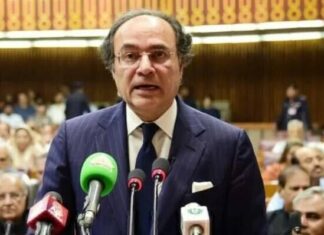KARACHI: The speakers and experts were unanimous that Pakistan’s energy sector has greatly suffered due to a lack of vision and strategy and because the main focus has always been on reckless capacity addition at an exuberant cost.
At the 15th Oil, Gas and Energy Conference 2019, held at Karachi Expo Centre here on Saturday, they mentioned that energy policymakers have largely ignored other important factors like improvement in the generation mix, augmentation of indigenous supplies, up-scaling of transmission and distribution systems and institutional development.
Dr Baqar Raza, Director General, Pakistan Council of Renewable Energy Technologies, while chairing the first session of the conference disclosed that a number of power producing agreements have been signed with China under which bio, hydel, solar and wind energy would be produced. He said that National Energy Testing Laboratory is being set up with a cost of $10 million. The laboratory would carry out up to 90 types of tests.
In his keynote address the Director, Alternative Energy Development Board (AEDB), Sheeraz Anwar Khan said that readjustment of the generation mix should be at the heart of any remedial plan when you are going to address the energy crisis prevailing in the country. He said that based on existing energy mix, Pakistan’s dependence on fossil fuels is 63% out of which 55% is on imported fuel which is a serious threat to our energy security. “Pakistan needs to quickly truncate the share of thermal power generation in the supply mix replacing it with indigenous supplies,” he said, adding that in 2016, total system capacity payments were Rs280 billion or Rs3.4 per unit sold. That is where the megawatts started coming in, while in 2017, after inclusion of CPEC, capacity payments went up to Rs350 billion and in 2018 capacity payments almost doubled from last year to Rs644 billion or Rs6.2 per unit. That is almost 60% of the power purchase price. Capacity payment bill might be close to Rs900 billion, that is Rs9 per unit in 2019, he sounded the alarm.
Toufeeq Ahmed, Chief Executive Officer, Lakhra Coal Mining Company (LCMC), has complained that we haven’t exploited the coal reserves found in abundance throughout the country. He mentioned that Pakistan can produce electricity from coal-based power plants for at least 200 years. He said that Pakistan has 1.328 billion tonnes of coal reserves but we need to go for mechanized coal mining to fully exploit the opportunities from coal.
Engr. Ali Nawaz, Director Projects, Private Power & Infrastructure Board (PPIB) said that to materialize government commitment to overcome energy shortfalls leading international investors and lenders are being invited to invest in the country’s power sector. So far the government has inducted 37 IPPs producing 15,469 MW with a cumulative investment of $16.7 billion. He said that more than 50% of electricity is supplied to the National Grid by IPPs while twelve projects of around 7,500 MW would be producing energy by end of 2022.
Asif Jehanzeb, Assistant Director, Directorate of Alternative Energy, Sindh Energy Department, said that renewable energy projects are being implemented under the framework of “Policy for Development of Renewable Energy for Power Generation, 2006”. Through this policy, local and foreign investors are fully protected under the Constitution of Pakistan, which guarantees the purchase of all power generated from the project through buy back guarantees of the GoP. For fulfilling the land requirements of power generation projects, the GoS has an exclusive policy for land allotment called “Statement of Conditions for Grant of State Land on Lease, 2015”.
Sharafat Ali Mangi of Mehran University of Engineering, Altaf Rehman, Commercial Director, Aspen Aerogel Inc. USA, Tayyab Rasheed, EVP, Head of Investment Banking, Faysal bank, Mariam Khalid, Punjab Energy Efficiency and Conservation Agency, Ammad Ghafoor of Aveva UAE and Imtiaz H Baloch also gave their presentations.























